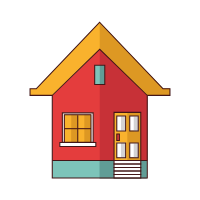Animals And Roof Damage: A Homeowner's Guide
Animals can wreak havoc on your roof, causing everything from internal damage to your attic to external damage to shingles, cladding, and eaves. Learn about the damage some animals can do and how to prevent it.
Squirrels
Squirrels are one of the most common animals to damage roofs in both urban and suburban settings. Generally, the damage is caused when squirrels chew through wood eaves or pry up shingles while trying to find food or shelter.
Prevention
Keep tree trimmed back so branches don't overhang the roof and provide easy access. Make sure the shingles are in good condition and lay flat to prevent curious prying. If your eaves are being chewed, replace them with metal or vinyl eaves.
Raccoons
Raccoons are quite strong and can rip up shingles and flashing, and sometimes tear through the roof cladding, in order to access your attic. They typically do this when looking for a warm, dry place to nest.
Prevention
Prevention tactics for raccoons are similar to those for squirrels. Further, keep your yard clear of pet food and other food items, and keep garbage lids secure so raccoons aren't tempted onto your property in the first place.
Birds
Birds can cause damage inside and outside of your roof. Nesting birds on the roof leave behind acidic droppings that damage shingles, and nest debris can block rooftop vents and chimneys. Birds can also sometimes get access into your eaves, where nesting habits can cause eave damage.
Prevention
Bird-scare devices, such as fake owls and wind activated whirly-gigs, can scare birds off so they don't come near your roof. Bird spikes are another option in areas where they tend to perch or nest, since they won't land if they see the spikes. Replacing wood eaves with a more durable material and making sure soffit vents are well screened will protect the inside of your roof.
Bats
No one wants bats in their belfry. Bat droppings can spread diseases, so you want to keep them out of your attic. Bats don't usually make their own access point. Instead, they come in through existing holes, such as roof damage, missing soffit vents, or unscreened ventilation stacks or chimneys.
Prevention
Make sure there is no damage to the roof and seal up any cracks or gaps around the roof edges. All roof penetrations need metal screening to keep pests out. Soffit vents must also be well screened.
Rodents
Rodents like mice and rats nest in attics because these places are warm and dry. Mice sometimes get into the attic from outside, but rats are more likely to get onto the roof by climbing up an overhanging tree or a plant vining up your home's exterior wall. Once in the attic, they chew through insulation and wires and leave droppings everywhere.
Prevention
Trim vines and trees to limit roof access. Make sure there are no entry holes, either along the roof or in the walls of your home, that will give rodents access.
If you suspect animals are damaging your roof, contact a roofing contractor for more help.

